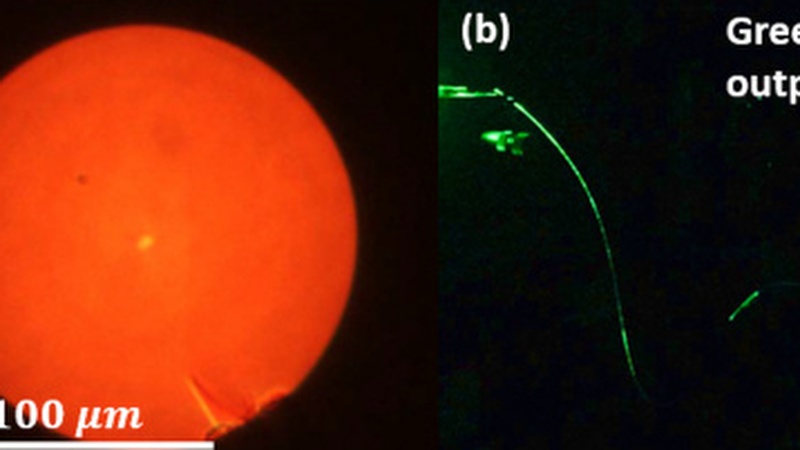There are a lot of remarkable uses for optical fiber, chief among them being telecommunications and imaging. While fiber can be produced for a better price than copper wire equivalents, they’re still not easy or cheap to manufacture.
Silica fibers require spinning tubes on a lathe, which requires the fiber’s core to be precisely centered. A new method by researchers based at the University of Technology, Sydney offers a simpler method using additive manufacturing.
There are still challenges in producing silica fiber, however – unlike commonly drawn polymer materials, silica requires high temperatures, up to 1900 degrees Celsius, to 3D print. Past attempts at glass printing using fused deposition modeling with high-temperature nozzles to pump out molten silica have been slowed by the viscosity of molten glass.

In order to overcome the temperature problem, composite materials consisting of a polymer with a lower melting point and silica nanoparticles are used instead. In addition, the researchers opted to use a direct laser writing printer. The technique involves drawing the molten material and pulling out the optical fiber. After the polymer and impurities are debinded and removed, it’s only an issue of sintering the silica to fuse the forms back together.
The method has been used to fabricate a preform that can be used for multi- or single-node fibers. While the technique isn’t perfected quite yet, it holds promise for reduced fabrication and material costs, as well as eliminating labor risks from the lathe-based work.
[Thanks to Qes for the tip!]
















multi- or single-mode fibers
Thought the same
Node is correct here.
Could you explain, please? I haven’t seen this before.
The article is behind a paywall so I’m a bit fuzzy on the details. I can buy 1km of optical fiber for $25 shipped on aliexpress so is there something special about this fiber?
even less if you look around a bit :D
Can you fire a laser into one end of that 1km and expect it to come out the other end without too much attenuation or distortion in the signal?
copied from wiki on single mode fiber:
OS1 and OS2 are standard single-mode optical fiber used with wavelengths 1310 nm and 1550 nm (size 9/125 µm) with a maximum attenuation of 1 dB/km (OS1) and 0.4 dB/km (OS2).
sooo…the input and output couplings will most likely have a lot more loss (unless you spend a lot of time polishing them) then the 1km of fiber.
Thèse are relatively simple fibers tout make.
A significant field of research today is of building fibers with structured core. The idea is to lower dispersion = higher bandwidth for communications), allow higher powers inside… and major limitations come in the shape of the preform (you could not just do any shape you wanted). There’s now a good chance that crazy shapes can be tried and improve performances.
It’s not node but mode. Because singlemode has one mode of light and multimode has multiple.
Could you explain, please? I haven’t seen this before.